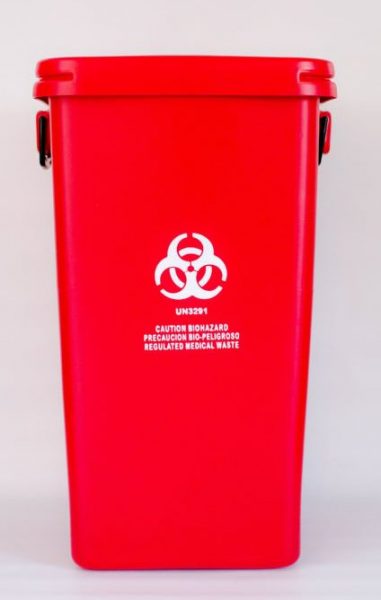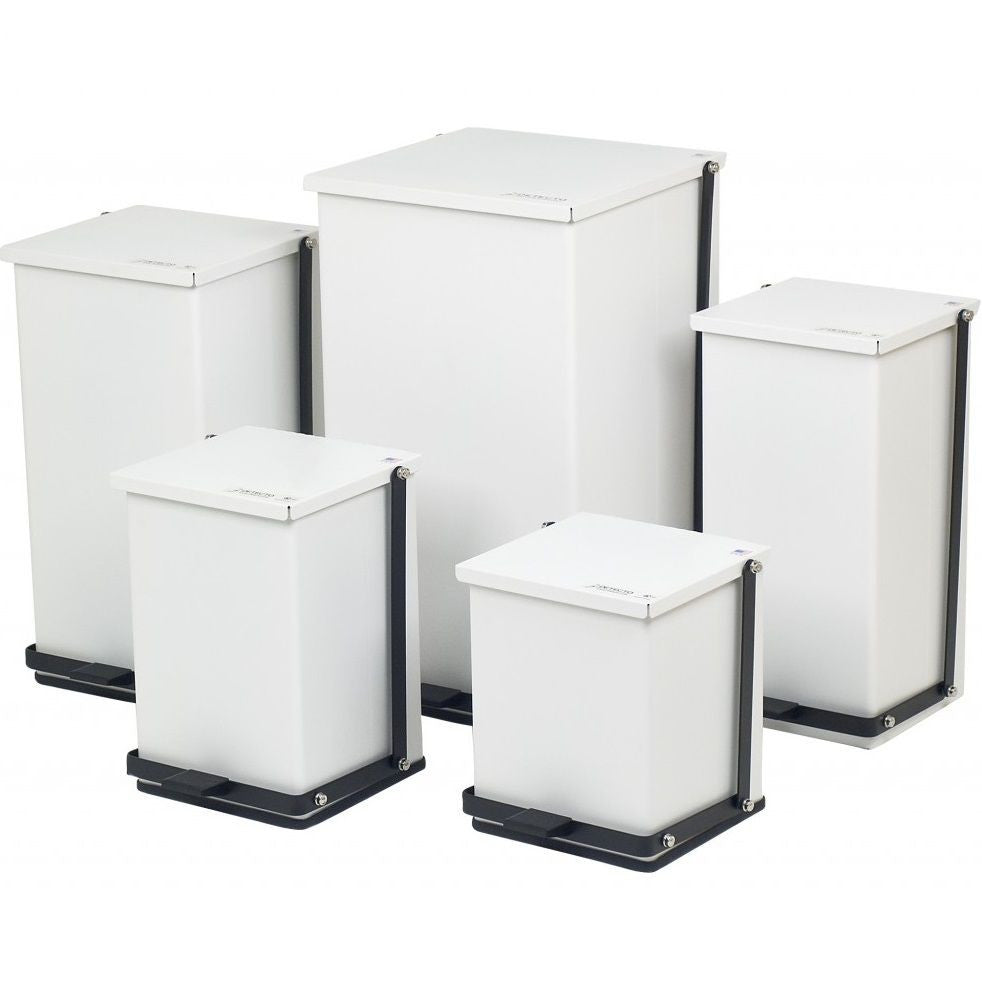Medical Waste Removal Quality: Elevating Safety Requirements in Your Facility
Wiki Article
The Significance of Proper Medical Waste Disposal: A Guide for Medical Care Facilities
Appropriate clinical garbage disposal is a critical facet of health care facility monitoring, guaranteeing the security and well-being of people, personnel, and the atmosphere. From recognizing the different categories of medical waste to complying with governing requirements, medical care centers must take on efficient waste segregation techniques and select suitable disposal techniques. The relevance of correct clinical waste disposal goes beyond plain conformity; it is a duty that needs continuous training and education and learning for team. In this guide, we will certainly check out the various aspects of clinical garbage disposal and highlight the necessary steps that health care centers need to take. By carrying out these techniques, health care centers can mitigate threats, shield public wellness, and add to a cleaner, much safer environment.Comprehending Medical Waste Categories
Understanding medical waste groups is vital for proper disposal in health care facilities. Clinical waste is a wide term that incorporates various sorts of waste generated in health care setups, such as hospitals, research laboratories, and facilities. Classifying medical waste aids make certain that it is handled, kept, and disposed of safely and in conformity with suitable laws.There are a number of categories of clinical waste that health care centers require to be mindful of. These categories consist of contagious waste, sharps waste, pharmaceutical waste, chemical waste, and radioactive waste (medical waste disposal services with WasteX). Each category has certain qualities and requires different disposal methods to reduce the threat of damage to medical care workers, clients, and the setting
Transmittable waste, for example, refers to waste polluted with potentially infectious materials, such as blood, body fluids, and tissues. Drug waste consists of run out or extra medications, while chemical waste consists of unsafe chemicals made use of in medical treatments.
Compliance With Regulatory Demands
Medical care centers have to ensure compliance with regulatory demands for appropriate clinical garbage disposal. Regulatory bodies, such as the Epa (EPA) and the Occupational Safety And Security and Health Administration (OSHA), have established policies and guidelines to safeguard public health and wellness and the environment. These regulations outline the proper handling, storage, transport, and disposal of medical waste.Conformity with governing requirements is crucial for healthcare facilities to avoid lawful fines, reputational damages, and potential injury to human health and wellness and the setting. Failure to follow these laws can cause penalties, claims, and even the suspension or abrogation of running licenses.
To guarantee conformity, health care centers need to establish detailed waste administration programs that include team training, proper waste segregation, and the usage of suitable containers and labels. Regular audits and examinations must additionally be performed to determine any non-compliance issues and address them promptly.
It is crucial for health care centers to keep up to date with modifications in guidelines and update their waste monitoring methods appropriately. This can be accomplished by proactively checking updates from regulative bodies and taking part in training programs and workshops.
Implementing Efficient Waste Segregation Practices
To ensure proper medical garbage disposal, healthcare centers must implement efficient waste partition practices. Waste segregation is a crucial action in the overall waste monitoring process, as it helps lessen the danger of infection, avoids cross-contamination, and makes sure the secure disposal of various kinds of waste. Effective waste partition practices involve dividing clinical waste right into various groups based on its features and possible threats.One typical method is the partition of sharps waste, such as scalpels and needles, from other sorts of clinical waste. Sharps waste should be positioned in puncture-resistant containers to stop injuries and prospective infections. Furthermore, dangerous waste, such as pharmaceuticals and chemicals, must be separated from basic medical waste to stop environmental contamination.
Proper labeling and color-coding of waste containers are vital for effective waste segregation. Clear and visible tags ought to be put on each container to suggest the kind of waste it includes and any kind of special delivery demands - medical waste disposal services with WasteX. Furthermore, color-coding can be used to differentiate in between different waste categories, making it simpler for medical care personnel to identify and get rid of of waste properly
Routine training and education and learning for medical care staff is important for the successful implementation of waste partition techniques. Staff members need to be informed on the various waste classifications, appropriate partition strategies, and the relevance of adhering to waste management procedures. This will certainly aid guarantee compliance and uniformity in waste partition techniques throughout the center.
Picking Appropriate Disposal Approaches
Appropriate option of appropriate disposal approaches is crucial in making certain the eco accountable and secure administration of clinical waste in healthcare facilities. Medical care centers generate a range of medical waste, consisting of sharps, infectious waste, pharmaceutical waste, and chemical waste - medical waste removal services. Each kind of waste needs specific disposal approaches to reduce the risk of contamination, injury, and why not find out more ecological damageOne typical disposal method for clinical waste is incineration. Incineration includes the controlled burning of waste at high temperatures. This method is efficient in ruining microorganisms and decreasing the quantity of waste. However, it can release damaging pollutants right into the air if not effectively regulated.

Chemical sanitation is another method used for particular kinds of medical waste, such as pharmaceutical waste. This technique makes use of chemicals to counteract or ruin pollutants. Nonetheless, it is essential to pick chemicals that are risk-free and eco-friendly.
In some situations, landfill disposal might be suitable for non-hazardous medical waste (medical waste disposal services with WasteX). Nevertheless, proper segregation and packaging are essential to avoid leakage or contamination.
Inevitably, health care centers must thoroughly assess the qualities of their medical waste and select proper disposal approaches that prioritize safety and security, environmental management, and regulatory compliance. Normal training and tracking are vital to make certain that healthcare personnel follows appropriate disposal procedures.

Training and Educating Team on Proper Disposal Treatments
Personnel education and training play a critical function in making sure the correct disposal of clinical waste in healthcare centers. It is necessary that all team member, including medical professionals, registered nurses, professionals, and assistance personnel, receive comprehensive training on proper disposal procedures. This training must cover the different types of medical waste, their potential risks, and the ideal methods for taking care of, segregating, and taking care of them.Among the primary goals of team education and learning and training is to ensure that all medical care specialists understand the significance of correct disposal procedures and the possible repercussions of improper waste monitoring. They require to be conscious of the dangers related to medical waste, such as the transmission of infections and the contamination of the setting. medical waste removal. By recognizing these dangers, personnel will certainly be more motivated to follow appropriate disposal methods and take the required preventative measures to shield themselves, their colleagues, and the neighborhood
Educating need to also cover making use of personal protective tools (PPE) and the correct methods linked here for taking care of medical waste. Team member should be educated on how to determine and set apart various kinds of waste, such as sharps, infectious waste, and harmful chemicals. They ought to also be educated on the appropriate usage of waste containers, such as sharps containers and biohazard bags, as well as the importance of labeling have a peek at this website and sealing these containers properly.
In addition, staff education and learning and training must consist of normal updates and refresher training courses to make certain that medical care specialists stay informed concerning the most recent regulations and best practices in clinical waste disposal. This recurring education is vital to maintain a high level of recognition and compliance among personnel members.
Verdict
In verdict, appropriate clinical waste disposal is of utmost relevance for healthcare facilities. Recognizing the different groups of medical waste and abiding with governing requirements ensures the safety and security and wellness of both health care employees and the general public.From recognizing the various groups of clinical waste to abiding with regulative demands, medical care facilities need to adopt effective waste segregation methods and select appropriate disposal techniques. These groups consist of transmittable waste, sharps waste, pharmaceutical waste, chemical waste, and contaminated waste.To make sure proper clinical waste disposal, medical care centers should implement effective waste segregation methods. Waste partition is an essential action in the general waste management procedure, as it assists lessen the danger of infection, protects against cross-contamination, and guarantees the safe disposal of various kinds of waste. Medical care centers generate a selection of medical waste, including sharps, transmittable waste, pharmaceutical waste, and chemical waste.
Report this wiki page